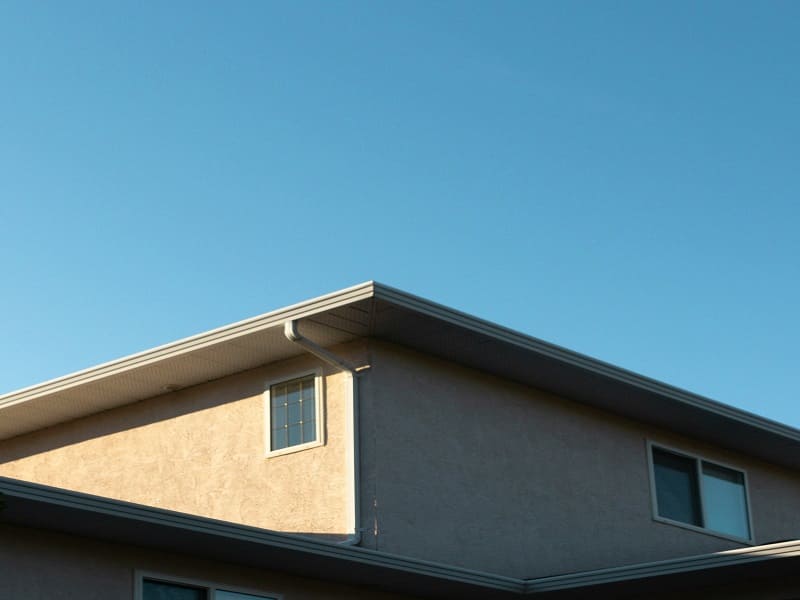What Are Winter Foam Gutter Guards
Explore foam gutter guards. Learn about their easy installation, reduced cleaning benefits, and winter considerations. Uncover the pros and cons, including winter considerations.
Are you sick and tired of climbing up a ladder a few times a year to clear your gutters? Imagine never having to clean your gutters! That's what the majority of gutter guard suppliers guarantee.
In addition to saving you from climbing a ladder to remove leaves and debris from your roof, gutter guards ensure that gutters properly channel precipitation from the
roof to the ground, preventing mold and decay.
Understanding Foam Gutter Guards
Gutter foam guards are long, triangular, arch-shaped portions of foam that fit tightly into gutters. They are made with perforations that let water flow through and down your gutters while blocking larger debris. They can be made of polyester, polyether, or polyurethane foam.
The shape of a foam gutter guard is trapezoidal. Usually measuring eight feet in length and five inches in width, they have soft ridges on top that resemble fins and collect waste before it enters the gutter. Because of its flexibility and lightweight, the foam may be firmly positioned within any gutter design.
How Do Gutter Foam Guards Work?
Gutter foam comes in a variety of brands on the market. Despite their modest differences, they all generally function in the same manner.
Gutter foam guards are installed manually into your gutter and form a barrier that lets rainwater pass through while capturing any debris that might obstruct it. The specific components employed in the creation of the foam—typically UV-stabilized polyether, polyester, or polyurethane—allow for this filtering function.
Advantages of Foam Gutter Guards
Because of their many advantages, foam gutter guards are a popular choice among homeowners. Here are a few advantages:
Simple to set up
Foam gutter guards are incredibly easy to install; all you have to do is cut a piece of foam to the appropriate size and slide it into the gutter.
Low Cost
Because they are made of basic, simple foam components, their manufacturing costs are low, making them a reasonably priced gutter guard choice. Because you can press the foam into the gutter without the need for a professional gutter guard installer, you also save a significant amount of labor.
Insulation
Ice dams may not form as a result of the insulation that foam gutter guards might offer to the gutters. Ice dams form when snowmelt refreezes at the roof's edge, allowing water to back up and perhaps imposing damage to the interior of the house as well as the roof.
Effective Against Debris
The purpose of foam gutter guards is to keep leaves, twigs, and other debris out of the gutters. This helps avoid obstructions that might cause water damage, particularly in the winter when debris like leaves can build up.
Disadvantages Of Foam Gutter Guards
With foam gutter guards, it's not all sunshine and roses. The drawbacks are as follows:
Shape Loss Over Time
Foam gutter guards are flexible and easily removable for cleaning purposes. Sadly, their adaptability can also be a disadvantage because they deteriorate with time. The foam deforms a little bit each time you remove them for cleaning, making your gutters less snug.
Not Very Effective In Heavy Rain
Like all foams and sponges, their water-holding capacity is limited. Additionally, water will eventually be able to escape after they are filled. This occurs when gutter foam absorbs excessive amounts of water. Although the purpose of gutters is to direct water, they can do significant damage to your property if water accumulates and spills over their sides.
Short Lifespan
Because foam gutter guards are composed of flexible, lightweight materials, their lifespan is shorter than that of other kinds. The most resilient option can last up to five years, but the majority will begin to deteriorate after two to three years.
Another problem is quality; if your foam gutter guards aren't UV-stabilized, they may begin to shrink and split after just one summer.
Need To Be Removed In Winter
Foam gutter guards might not be the best choice if you are in an area that frequently suffers freezing weather. When the temperature drops, they ought to be taken out. If they aren't, they might freeze and then thaw, allowing moss, mold, or weeds to develop in them. This implies that you have to keep in mind to come up with a fresh plan for the winter months each year.
Are Foam Gutter Guards Worth It?
Foam gutter guards are long pieces of foam that fit inside gutters. As water runs through the foam, leaves, twigs, and other debris are caught, keeping them out of the gutters. Because they are so simple to install, a lot of people are selecting these gutter covers.
However, water flow may be slowed down by the easy filling of the porous material with roofing debris. Ants and mosquitoes are attracted to wet and debris-filled gutter foams. Cleaning these gutter guards is another challenge. They would have to be taken out of the gutters and given a physical cleaning, rinsing, and sanitizing.
In addition, gutter sponges that are reinserted frequently lose their shape and no longer fit the gutters, which causes them to cease functioning correctly. They are prone to UV radiation damage, which means they will disintegrate in a few years.
Bottom-Line
To sum up, foam gutter guards offer a simple installation process along with some immediate advantages, like less gutter cleaning and less visual impact. But over time, their elasticity causes form loss, which reduces their efficacy. Their limited ability to retain water creates problems during periods of heavy rainfall. Moreover, their short lifespan, susceptibility to UV rays, and requirement for winter removal give rise to concerns. Although applicable, foam gutter guards have disadvantages that should be carefully considered, and their suitability may vary based on the temperature and maintenance requirements.



Leave a comment
This site is protected by hCaptcha and the hCaptcha Privacy Policy and Terms of Service apply.